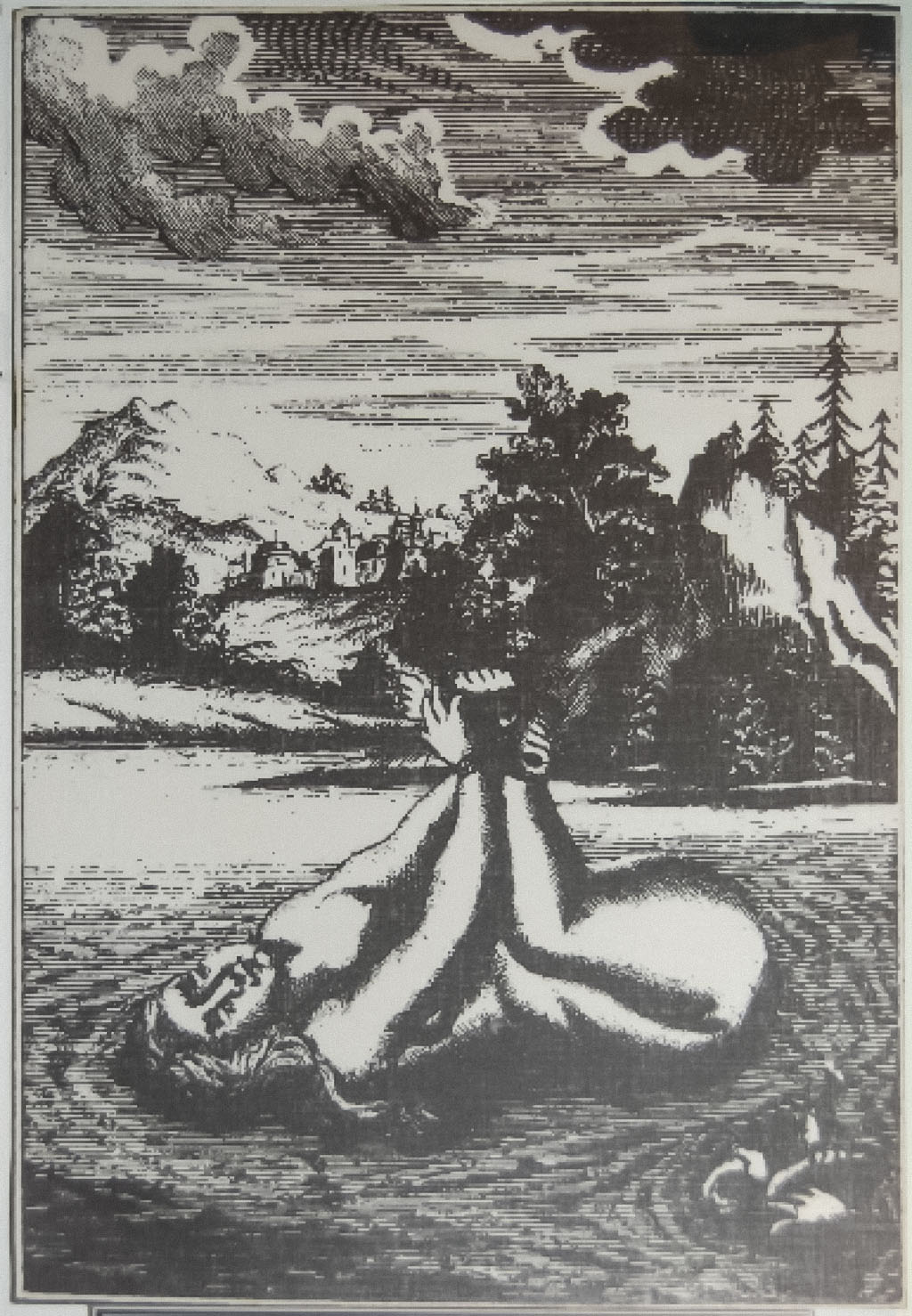
954 – Picture – Swimming a Witch
- Physical description:
- Reproduction of a 17th century German engraving showing a bound woman floating on her back in a river, with the hands and feet of a drowning woman alongside.
- Museum classification:
- Persecution
- Size:
- 280 x 200 mm
- Information:
Some of those accused of witchcraft were stripped naked and had their hands and feet bound together. The picture depicts a 'guilty' witch floating and a 'not guilty' witch drowning.
This engraving is based on an earlier woodcut from the title page of a pamphlet condemning 'witch swimming' - 'Bericht von Erforschung Prob und Erkentnis der Zauberinnen Durchs Kalte Wesser' by Hermann Neuwaldt (1584).
Although it often degenerated into mob violence, 'swimming' of witches was in fact an unofficial revival of the medieval Trial by Ordeal, which attempted to invoke the intervention of God to determine a person's guilt or innocence. Some people accused of witchcraft actually asked to be 'swum' in the belief that God would prove their innocence. Ironically, Trial by Ordeal could itself be viewed as a magical practice - one of the reasons it fell out of favour in the Middle Ages.- Resource:
- Picture
- Materials:
- Paper
- Copyright ownership:
- Treetrunk Ltd
Some of those accused of witchcraft were stripped naked and had their hands and feet bound together. The picture depicts a 'guilty' witch floating and a 'not guilty' witch drowning.
This engraving is based on an earlier woodcut from the title page of a pamphlet condemning 'witch swimming' - 'Bericht von Erforschung Prob und Erkentnis der Zauberinnen Durchs Kalte Wesser' by Hermann Neuwaldt (1584).
Although it often degenerated into mob violence, 'swimming' of witches was in fact an unofficial revival of the medieval Trial by Ordeal, which attempted to invoke the intervention of God to determine a person's guilt or innocence. Some people accused of witchcraft actually asked to be 'swum' in the belief that God would prove their innocence. Ironically, Trial by Ordeal could itself be viewed as a magical practice - one of the reasons it fell out of favour in the Middle Ages.